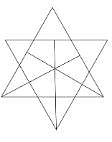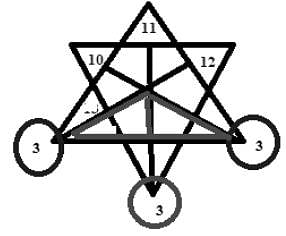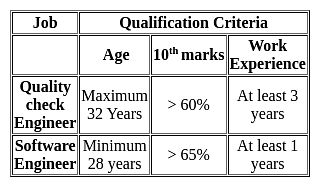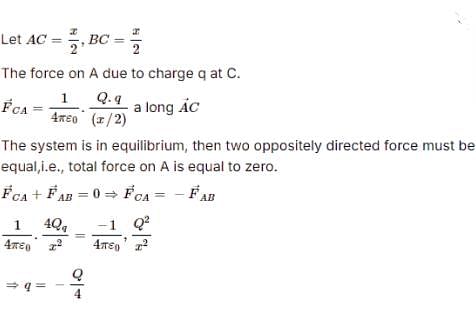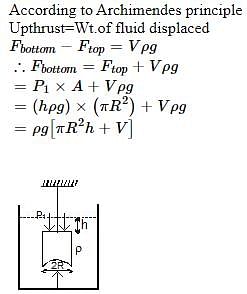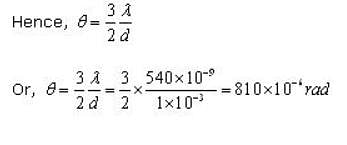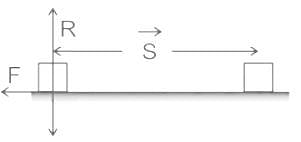NVS PGT Physics Mock Test - 1 - NVS TGT/PGT MCQ
30 Questions MCQ Test NVS PGT Mock Test Series 2025 - NVS PGT Physics Mock Test - 1
From the point of view of evolution of living organisms, which one of the following is the correct sequence of evolution ?
| 1 Crore+ students have signed up on EduRev. Have you? Download the App |
Direction: If a Paper (Transparent Sheet) is folded in a manner and a design or pattern is drawn. When unfolded this paper appears as given below in the answer figure. Choose the correct answer figure given below.
A piece of paper is folded and cut as shown below in the question figures. From the given answer figures, indicate how it will appear when opened.
Question Figure

Answer figure

Question Figure

Answer figure

If in a certain code language, 'four' is called 'five', 'five' is called 'six', 'six' is called 'seven', 'seven' is called 'eight', 'eight' is called 'nine' and 'nine' is called 'ten'. Then what is cube of the number 2?
To qualify for a post of Quality check Engineer in an IT company, the maximum age can be of 32 years, 10th marks should be more than 60% and work experience should be at least 3 years. To qualify for Software Engineer, one should have a minimum age of 28 years, 10th marks should be more than 65%, and work experience of at least 1 year. Rajat has 64% marks in 10th an age of 27 years and work experience of 5 years. For which of these jobs does he qualify?
One of the main technological edges of ICT involves in enhancing interactive communication among people staying at varied locations through electronic devices. This technology is called as?
STATEMENT-1 A cloth Covers a table. Some dishes are kept on it. The cloth can be pulled out without dislodging the dishes from the table
because
STATEMENT-2 For every action there is an equal and opposite reaction
During an experiment with a metre bridge, the galvanometer shows a null point when the jockey is pressed at 40.0 cm using a standard resistance of 90 Ω, as shown in the figure. The least count of the scale used in the metre bridge is 1mm. The unknown resistance is
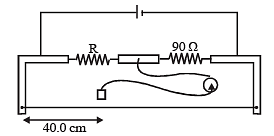
A particle has an initial velocity of 3i + 4j and an acceleration of 0.4i + 0.3j. Its speed after 10s is:
The mass of an electron is 9 x 10-31 kg. It revolves around the nucleus of an atom in a circular orbit of radius 4.5 Å, with a speed of 8 x 105m/s. The angular momentum of electron is
Two wires of the same material having radii in the ratio 1:2, carry currents in the ratio 4 : 1. The ratio of drift velocities of electrons in them is
For the formation of distinct beats, the frequencies of two sources of sound should be
Two coherent monochromatic light beams of intensities I and 4I are superposed. The maximum and minimum possible intensities in the resulting beam are:
A charge q is placed at the center of the line joining two equal charges Q. The system of the three charges will be in equilibrium if q is equal to
A hemispherical portion of radius R is removed from the bottom of a cylinder of radius R. The volume of the remaining cylinder is V and its mass is M. It is suspended by a string in a liquid of density r where it stays vertical. The upper surface of the cylinder is at a depth h below the liquid surface. The force on the bottom of the cylinder by the liquid is
[JEE 2001 (Scr.)]
An automobile travelling at a speed of 60 km/h, can apply the brake to stop within a distance of 20 m. If the car is going twice as fast, i.e. 120 km/h, the stopping distance will be:
[AIEEE 2004]
A ball is released from the top of a tower of height h meter. It takes T seconds to reach the ground. What is the position of the ball in T/3 seconds?
[AIEEE 2004]
What is the angular spread of the first minimum and the central maximum when diffraction is observed with 540 nm light through a slit of width 1mm?
Which of the following forces is non-conservative in nature?
Error in the measurement of radius of a sphere is 1%. The error in the calculated value of its volume is:
A parachutist after bailing outfalls 50 m without friction. When the parachute opens, it decelerates at 2 ms-2. He reaches the ground with a speed of 3 ms-1. At what height, did he bail out?
[AIEEE 2005]
In the following question, four words are given out of which one word is incorrectly spelt. Find the incorrectly spelt word.
निम्नलिखित प्रश्न में, चार विकल्पों में से, उस विकल्प का चयन करें जो विलोम शब्द का सबसे अच्छा विकल्प है I
मूक
|
30 tests
|




